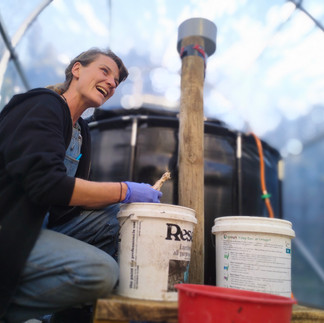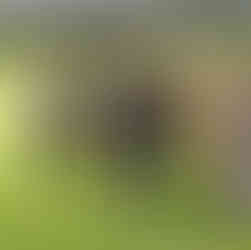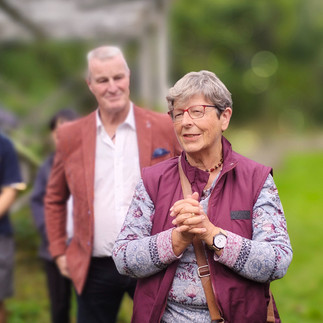KPŌ: from cow to ka-pow
- energiseotakicomms
- Apr 18
- 2 min read
Updated: Apr 19
“This is the first time I’ve really actively worked with another community group.
As we've been able to pull the curriculum learning in as well, it’s felt really collaborative. Whenever I talk with people about [the project] there’s always another idea for it.
It feels like a really emergent project rather than a limited, one-off adventure…”
-Rosa Yates (Ahoaho), Kai Power Ōtaki team member

Our youngest project Kai Power Ōtaki has grown up and blown up. The waste biodigester that transforms muck into gas and liquid fertiliser has become a bigger ‘living learning environment’.
Kai Power Ōtaki is a collaboration with long time bestie Ōtaki College, made with a Kāpiti Coast District Council Waste Levy grant (ngā mihi!), and many donated hours from Energise Ōtaki crew (especially our Chair, Leigh).
A greenhouse, set in Ahoaho’s māra kai on College grounds, warms and protects the bulky anaerobic biodigester. Black plastic covers the small tank to keep insects out. In fact it keeps out everything - even air - unless Rosa puts it in.
Kai Power Ōtaki’s aim is to provide a way to use scraps not suitable for composting, like meat. To create the right environment, the biodigester was first filled with cow manure and water. Within a few weeks (after leaky valve and low fluid levels had been sorted out), bacteria in the manure made enough methane to begin inflating the cover. Which was enough gas to fuel a camp stove to boil water for tea.
With the system stabilised, other organic materials could be introduced. Discarded apples were used for three weeks, and as of last week, scraps from school lunches too.
Extracting the methane requires an electric pump, so Energise Ōtaki supplied and installed solar panels to power it.
This was the opportunity for the school to make use of a donated aquaponics system.
Now, next to the biodigester greenhouse, is a goldfish tank (providing fertiliser), and a zigzag of half pipes with baby lettuces and strawberries beginning to grow in them.
In a site visit last week, Year 10 Chemistry and Biology ākonga/ students explained to KCDC staff how each system worked, before presenting their ‘outdoor lab’ results from adding various dilutions of the biodigester’s other output, liquid fertiliser, to seeds.
Then they offered everyone popcorn cooked with gas from the biodigester itself.
Despite the origins of the cooking gas, it tasted great. In the future, this gas might be stored for school sausage sizzles.
Turns out the smell of success isn’t sweet - it pongs! - but the taste is what you make with it.
Ngā mihi nui to Principal Andy Fraser and Ahoaho’s Rosa Yates and Jack Leason for hosting us all; to Whaea Seuga Frost and your ākonga for presenting; to KCDC’s Waste Minimisation team members and Rob Dunn (Community Sustainability Advisor) for coming and for your ongoing support.

























